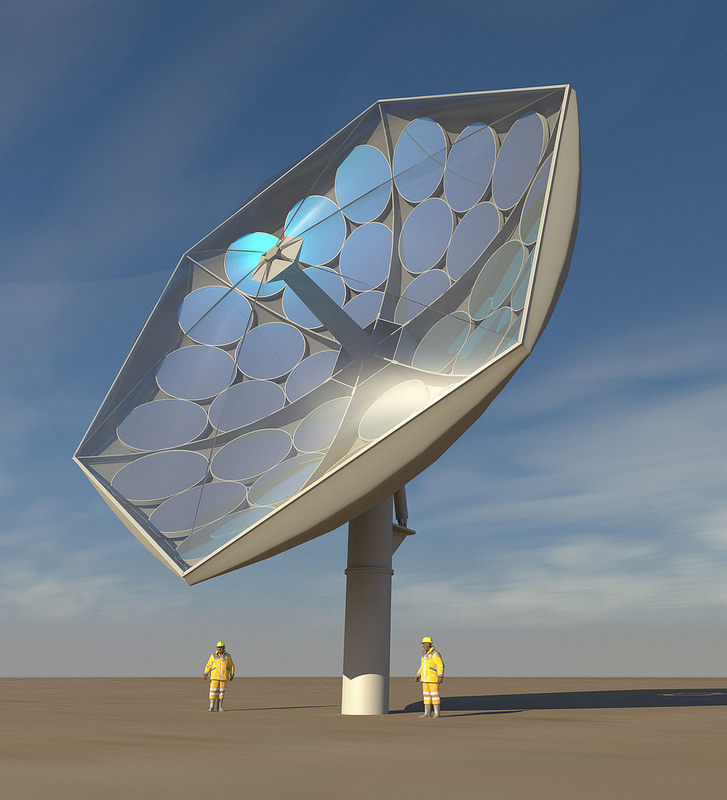IBM Solar Dish Does Double Duty
Cooling a supercomputer can provide clues on how to make solar power cheap, says IBM.

IBM Research today detailed a prototype solar dish that uses a water-cooling technology it developed for its high-end computers (see “Hot Water Helps Super-Efficient Supercomputer Keep Its Cool”). The solar concentrator uses low-cost components and produces both electricity and heat, which could be used for desalination or to run an air conditioner.
The work, funded by $2.4 million grant from the Swiss Commission for Technology and Innovation, is being done by IBM Research, the Swiss company Airlight Energy, and Swiss researchers. Since this is outside IBM’s main business, it’s not clear how the technology would be commercialized. But the high-concentration photovoltaic thermal (HCPVT) system promises to be cost-effective, according to IBM, and the design offers some insights into how to use concentrating solar power for both heat and electricity.
Typically, parabolic dishes concentrate sunlight to produce heat, which can be transfered to another machine or used to drive a Stirling engine that makes electricity (see “Running a Marine Unit on Solar and Diesel”). With this device, IBM and its partners used a solar concentrator dish to shine light on a thin array of highly efficient triple-junction solar cells, which produce electricity from sunlight. By concentrating the light 2,000 times onto hundreds of one-centimeter-square cells, IBM projects, a full-scale concentrator could provide 25 kilowatts of power.
In this design, the engineers hope to both boost the output of the solar cells and make use of the heat produced by the concentrator. Borrowing its liquid-cooling technology for servers, IBM built a cooling system with pipes only a few microns off the photovoltaic cells to circulate water and carry away the heat. More than 50 percent of the waste heat is recovered. “Instead of just throwing away the heat, we’re using the waste heat for processes such as desalination or absorption cooling,” says Bruno Michel, manager, advanced thermal packaging at IBM Research.
Researchers expect they can keep the cost down with a tracking system made out of concrete rather than metal. Instead of mirrored glass on the concentrator dish, they plan to use metal foils. They project the cost to be 10 cents per kilowatt-hour in desert regions that have the appropriate sunlight, such as the Sahara in northern Africa.
One of the primary challenges of such a device, apart from keeping costs down and optimizing efficiency, is finding a suitable application. The combined power and thermal generator only makes sense in places where the waste heat can be used at least during part of the day. The researchers envision it could be used in sunny locations without adequate fresh water reserves or, potentially, in remote tourist resorts on islands. In those cases, the system would need to be easy to operate and reliable.
Keep Reading
Most Popular
Large language models can do jaw-dropping things. But nobody knows exactly why.
And that's a problem. Figuring it out is one of the biggest scientific puzzles of our time and a crucial step towards controlling more powerful future models.
How scientists traced a mysterious covid case back to six toilets
When wastewater surveillance turns into a hunt for a single infected individual, the ethics get tricky.
The problem with plug-in hybrids? Their drivers.
Plug-in hybrids are often sold as a transition to EVs, but new data from Europe shows we’re still underestimating the emissions they produce.
Stay connected
Get the latest updates from
MIT Technology Review
Discover special offers, top stories, upcoming events, and more.